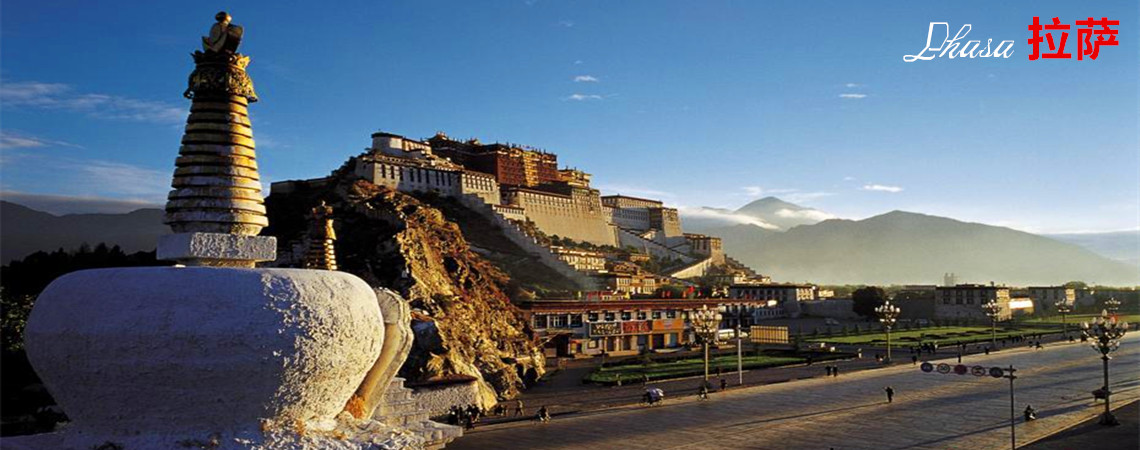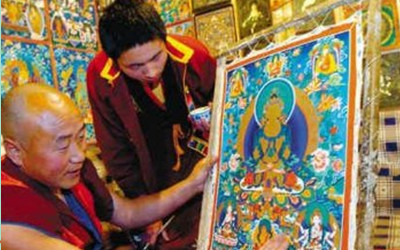Skype: neodalle-travel
Tel: +86 135 7447 2266
E-mail: sales@visitaroundchina.com

 Thangka refers to the religious scroll painting framed with color stain which used for worshiping. It is an art form with unique features in Tibetan culture. The themes of the paintings include history, policy, culture, social life and so on. The Thangka handed down from ancient times are mainly works of Tibetan Buddhism and Bon. Thangka is a Tibetan transliteration, which means religious worship scroll painting mounted by colorful stain.
Thangka refers to the religious scroll painting framed with color stain which used for worshiping. It is an art form with unique features in Tibetan culture. The themes of the paintings include history, policy, culture, social life and so on. The Thangka handed down from ancient times are mainly works of Tibetan Buddhism and Bon. Thangka is a Tibetan transliteration, which means religious worship scroll painting mounted by colorful stain.
History Tibetan Thangka
Due to natural and historical reasons, it is difficult to trace the origins of Thangka. According to legend, Tubo King Srongtsen Gampo used his nosebleed and painted the portrayal of Bailamu following the divine guidance, and this was the first Thangka. According to legend, the tangka was hidden by Living Buddha into the abdomen of the Bailamu’s statue. The art of painting can be traced back earliest may to the Neolithic, and to the Tubo Dynasty, the art of painting was perfected.
Tibetan Thangka Features
Thangka, with distinctive ethnic characteristics, strong religious overtones and unique artistic style, has always been regarded as the treasures of Tibetan people. Thangka’s varieties and textures are varied, but most are drawn on canvas and paper. There is also embroidery, brocade, tapestry and other fabrics applique thangkas. Some even decorated with gold bead, a perfect fit. Thangka painting is the miracle of Tibetan culture with more than a thousand years far-reaching influence.
①. Thangka’s contents are various: Both various Buddha and paintings reflects the Tibetan history and ethnic customs. Thangka has rigorous composition, balanced, full, varied, drawing mainly meticulous re-color and based on line drawing.
② Variety of species, in addition to the printed Thangka and Thangka painting, there are also embroidery, tapestry (Duixiu), tapestry, decal, pearl Thangka andso on.
③ Embroidery Thangka is embroidered with colored silk. The landscapes, figures, flowers, feathers, pavilions, etc. can be embroidered.
④ Brocade thangka is a kind of "Duixiu."
⑤ Applique thangka is colored stain which is cut into a variety of characters and graphics, and paste on the fabric.
Types of Tibetan Thangka
According to the content: Buddha's thangka, biography thangka, history thangka, legend thangka, moral thangka, astronomical thangka, calendar thangka, Tibetan medicine thangka, etc.
According to the size: large thangka, ordinary thangka, small Thangka.
 Ask Questions ?
Ask Questions ?